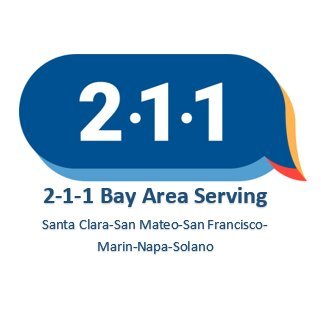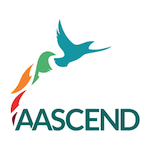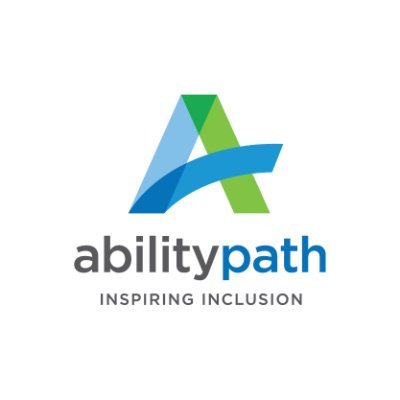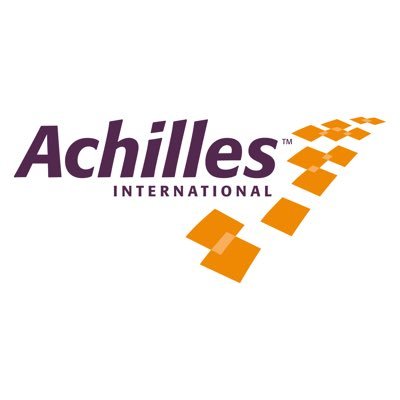
This page is undergoing maintenance. Many resource links will not work. Updates coming soon.
Housing
We’ve put together an overview of housing information for people impacted by autism. From the unique challenges of serving ASD adults, to listing service providers, to how to create your own housing solutions—we hope you’ll find the information you need here.
Scroll through the sections below, or click on one of the buttons to skip to the section that interests you most.
Adult Autism Housing & Service Providers
For information on service providers in your area and to apply for services, contact your local regional center:
General Information for Parents of Adults with Developmental Disabilities
Seeking Housing and Services
Resource Guide for Youth & Young Adults in Alameda County CCS
by the Alameda County Intraagency Transition Planning Team
Contains advice for families planning for transition to adult services.
See also: Youth and Young Adults in Transition to Adult Life
Lanterman Housing Alliance
Collaborate, network, and share best practices with the goal of providing housing for people with a developmental disability.
Rights Under the Lanterman Act: Regional Center Services for People with Developmental Disabilities
by Disability Rights California
A manual to help you understand the rights of people with developmental disabilities in California, focusing on rights under the Lanterman Act, which governs services provided through the Regional Centers and service providers.
Silicon Valley Independent Living Center – Santa Clara
SVILC offers housing services, which are unique to our independent living center. Our Specialists obtain and present updated information on the available wait lists and open housing opportunities to our members at our weekly workshops and during 1-on-1 appointments. SVILC works with other housing organizations to better understand and address the concerns of each member seeking housing. Each member is receiving coaching and resource information available to equip one for their housing search journey better.
Housing Choices – Santa Clara
The single largest component of our work is helping individuals with developmental and other disabilities find housing that suits their specific needs and priorities. Every year, our Housing Coordinators help more than 1,800 people with developmental and other disabilities create a housing plan and apply for affordable housing.
Overview of Current Adult Autism Housing Options
The Autism Society of the San Francisco Bay Area supports the Autism Society’s Options Policy, which emphasizes the uniqueness of each individual with autism and the right of each family and individual with autism to learn about and select the options they conclude are most appropriate. We embrace all forms of housing and supports that provide a positive, safe, caring environment for the individual in question. Here we discuss eight community-based ASD housing options that exist in the Bay Area.
Click on the tabs below to explore each option.
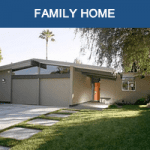
The majority of young adults with autism remain in the family home for many years before moving into separate housing. Because the state offers less support to ASD adults remaining in the family home with parents, there are unintended disincentives to keeping the child at home.
In-Home Support Services (IHSS) through the county may pay for in-home workers or pay the parents to be IHSS providers themselves at rates varying from $19-$23/hour, for up to 283 hours a month if Protective Supervision is needed. Independent Living Services (ILS) funded by the Regional Center may be available if warranted to provide life skills training and assistance with some tasks of daily living. Coordinated Family Support is another service funded by the Regional Center which helps support adults remaining in the family.
Pros: Proximity of parental supports; cost savings to government; parental oversight of service delivery and monitoring of safety.
Cons: Burden and stress on family caregivers is common; transportation options may be limited; does not prepare the individual to live independently of his/her parents or other family members; not an option for ASD adults whose parents have passed or are no longer capable of care due to aging, ability or health issues.
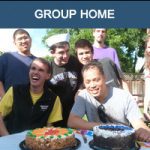
Also called Community Care Facilities, group homes privately owned single family homes with a for-profit or non-profit operator. They are licensed by the state of California, and typically have three bedrooms, housing up to six developmentally disabled adults, or about 1 to 2 residents per bedroom. Regional Centers pay the operator a monthly rate that covers both housing and staff services. Tenants can attend day programs outside of the group home, funded by Regional Centers.
Based upon the types of services provided and the persons served, each CCF vendored by a regional center is designated one of the following service levels:
- Service Level 1: Limited care and supervision for persons with self-care skills and no behavior problems. (These are not vendorized by Regional Centers)
- Service Level 2: Care, supervision, and incidental training for persons with some self-care skills and no major behavior problems.
- Service Level 3: Care, supervision, and ongoing training for persons with significant deficits in self-help skills, and/or some limitations in physical coordination and mobility, and/or disruptive or self-injurious behavior.
- Service Level 4: Care, supervision, and professionally supervised training for persons with deficits in self-help skills, and/or severe impairment in physical coordination and mobility, and/or severely disruptive or self-injurious behavior. Service Level 4 is subdivided into Levels 4A through 4I, in which staffing levels are increased to correspond to the escalating severity of disability levels.
Pros: Some families prefer the relatively comprehensive all-in-one services offered by group homes, which often feature structured daily routines, transportation, social opportunities, and recreation/programming; more oversight by state and Regional Centers; must follow strict regulations regarding staffing, care, safety, and reporting, and issues are investigated, documented and available for public review; some owners and staff are often very committed to providing care and see their work as a mission, not just a job;
Cons: Some group homes can be poorly run, with tenants somewhat neglected and essentially excluded from community integration. This model was generally not set up for adults with autism, and new models are needed: owners and staff often reticent to adjust home operations to accommodate behaviors and needs of residents with autism. Lack of staff training specific to autism and individualized planning. Room sharing, close proximity to others, and group planning do not often suit individual needs of those with autism. State pays a very low flat state median rate for cost of care (which varies according to the service level, and when the group home was licensed), rendering it difficult to comply with staffing and other regulations; no cost of living allowance made for geographic location, low pay (minimum wage or just above) impacts availability of qualified staff and a high turnover rate is common; long-term viability is a problem because many group homes are operated for profit, with the residential owner’s retirement built into equity of the home–when home is sold, residents sometimes must move; the joint provision of housing and services can be a problem when the DD client prefers one but not the other; some group homes limit parental involvement, though Regional Centers support parent involvement.
Pictured: The Cypress home in San Jose operated by nonprofit Life Services Alternatives, Inc., houses five young men with mild to moderate developmental disabilities. Despite some successes, some group homes have been highly impacted or have had to close due to inadequate vendor rates that fail to cover rental and staff costs, particularly in the expensive Bay Area, and insufficient supply of properties.
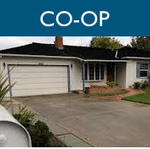
Co-ops are typically single-family homes owned by a landlord, parents or nonprofit where 3 or 4 developmentally disabled tenants live in separate bedrooms but share the living space. Co-ops are unlicensed, DD tenants typically rely on SLS or ILS support. Property management can occur via a parents or a nonprofit such as Housing Choices Coalition or Housing Consortium of the East Bay.
Pros: Good for consumers who can make their own choices about activities and daily living, but need support to carry out choices. Tenants can choose their own support services, unlike in a group home; stronger parental involvement possible. A co-op can be a “legacy home” donated by parents to a nonprofit, with a life estate for the child, plus roommates for cash flow to cover expenses; as a nonprofit it would not be subject to property tax.
Cons: Tenants’ quality of life may be impacted by poor supervision and poorly trained direct service providers from some ILS or SLS support agencies; limited support from regional centers; rental cost can be prohibitive unless subsidies are provided; limited availability of co-op properties; requires strong operational supervision, typically by parents or a nonprofit.
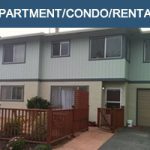
An ASD adult can rent a unit with help from a rental subsidy, if available, and receive daily living support from an SLS or ILS agency, funded by a combination of IHSS and Regional Center. Sometimes two or more DD adults can share a unit as roommates with separate or overlapping staff supports. SLS and ILS staffing is typically funded through state funds plus a federal match of Medicaid dollars. Social Security (SSI) is expected to fund the rent, utilities, food and living expenses. However, in the Bay Area, SSI, at roughly $1,000 per month, seldom covers even a quarter of the costs.
Pros: The ASD client retains separate control over housing choice and support staff; good for consumers who can make their own choices about activities and daily living, but need support to carry out choices. Good for consumers who can communicate if they feel mistreated by a support person. Depending on the nature of the SLS agency, the parents can remain involved in aspects of daily living and programming.
Cons: Rental subsidies are scarce, thereby limiting community housing options for those with ASD; most landlords refuse to accept vouchers, even when they are available; managing SLS for an ASD adult can be extremely complex and expensive; some risk of isolation for both caregivers and the client. If consumer is not able to express own choices, choices are left to the support workers to define or interpret for the consumer. Much depends on the skills and commitment of the support staff. More likely that a consumer would spend time alone with one staff, so risk of neglect or abuse may be higher than when living with a larger group and more staff.
Pictured: An ASD tenant with Section 8 or other subsidy may afford an apartment with ILS or SLS support. Unfortunately, most ASD adults are not provided with rental support and are priced out of the market. Below-market rate “affordable housing” units are scant and cannot possibly meet the surging demand for ASD housing. Expansion of rental subsidies for those with exceptional needs such as ASD is imperative.
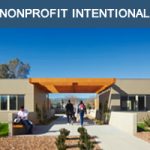
Parents of autistic children have become increasingly interested in creating intentional communities modeled loosely on retirement villages or farmsteads that offer not just housing but a community and programming aspect not available in individual apartments or group homes.
Pros: Opportunities for socialization, work and recreation; options for autism-friendly amenities, such as a pool, and design; onsite monitoring; regular maintenance; if owned by a nonprofit, stability of ownership with no or little property tax; a popular option for parents who can no longer provide regular monitoring or supervision; housing and services can be provided separately—Regional Centers can provide ILS or SLS support services.
Cons: Monthly rent can be high; high cost of entry due to site acquisition and construction; complexity of development and permits; difficulty obtaining donations to pay for significant initial costs which can run into the many millions of dollars; some object to the clustering of ASD people in one site.
Pictured: Dozens of nonprofit intentional communities for people with ASD are in development across the country. Sweetwater Spectrum opened several years ago in Sonoma, designed to house 16 adults (four homes with four tenants each), all of whom have their own support staff and day programs separate from the housing element. See sweetwaterspectrum.org.
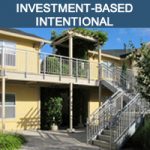
An intentional community can also be privately owned by investors, who may or may not be parents and family members. In this model, the investors pool their funds as an LLC to acquire or build a multifamily property with the specific intention of renting at least a portion of the units to adults with developmental disabilities. The investors earn income through rental payments, which cover mortgage, operations, and maintenance. The LLC does not provide services or supports, which would need to funded separately through the Regional Centers.
Pros: Parents can invest in nearby housing for their ASD children, retaining some control over the money including the option to withdraw, rather than donating it to a nonprofit, which involves many uncertainties. Parents, as owners, remain active in assuring the quality and care of the property. ASD-friendly amenities can be built into project plans.
Cons: Requires a cooperative group of investors and strong, visionary leadership; some object to the clustering of ASD people in one site, though a mix of ASD and standard units is also possible; if Section 8 or other subsidies are unavailable, may be unaffordable to ASD adults.
Pictured: The Peralta Apartments in Fremont provide an example of an investment-based intentional community. Privately owned by an LLC composed of parents, there are ten units with four bedrooms each. The complex is adjacent to the FCSN center, which provides ongoing programming and recreation. See fcsn1996.org.

A Family Home Agency, a nonprofit vendorized by a Regional Center, approves family homes which offer the opportunity for up to two adult individuals with relatively mild developmental disabilities to reside with a family and share in the interaction and responsibilities of being part of a family. The family home arrangement allows the sharing of food, shelter, experience, responsibilities and love. FHAs are responsible for recruiting, training, approving and monitoring family homes. Social service staff employed by the FHA make regular visits to the family home to ensure that necessary services and supports are in place, and that the match between the family and the new family member is viable, and continues to be viable.
FHA and family home services and supports are a new option which enables adults with developmental disabilities to enter into partnerships with families that promote self-determination and interdependence.
Pros: Takes advantage of existing real estate, possibility of nurturing and supportive home environment close to the client’s family, which can continue sharing in the care for the adult child.
Cons: Very limited supply; potential for burnout for foster caregivers if adult clients have ongoing behavior challenges; no staff and little training. Only appropriate for ASD adults needing minimal supports (those with aggression or who damage property are often not eligible for FHA).
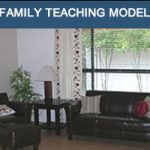
In this model, a family teaching couple lives next door to 3 consumers with an internal adjoining door between the two housing units (as in a duplex). The couple provides 75% of the support for the consumers, manage the building, and are the first to respond in an emergency. They build a close relationship with the consumers and work on behavior as well as training in areas promoting independence. The family teaching model is a teaching program focused on building independence with appropriate support.
Pros: A community-based supportive living arrangement appropriate for high functioning consumers with only mild behaviors and without extreme medical or nursing issues.
Cons: This option was offered to former residents of the Agnews Developmental Center and is not currently being offered to other Regional Center clients; potential for burnout for caregivers if adult clients have ongoing behavior challenges.
SFASA is committed to boosting quantity and quality of ASD housing in our communities.
What needs to be done? Among other things:
- Provide priority rental subsidies, such as Section 8, for those with exceptional needs, including substantially disabled ASD adults and their aides.
- Increase vendor rates for group homes to reflect actual cost of living in the Bay Area.
- Increase vendor rates for supported living services to ensure viable community-based living options.
- Create a new model of small, custom group home living tailored to the specific sensory, movement, and space needs for adults with substantial autism. Autism presents unique challenges to staff and programs (see summary of Unique Challenges of Serving ASD Adults).
- Provide incentives for investors to provide housing units to those with ASD, including project-based Section 8 vouchers and/or property tax waivers.
- Use public property and old Developmental Center sites for mixed-used developments that include a strong ASD-friendly component.
- Prioritize ASD housing for new low-income housing developments and set-asides.
- Ending restrictive zoning practices that deny the developmentally disabled access to community-based living options.
For more area groups involved in ASD/DD housing issues, please click here.
Intentional Communities
A growing number of families are interested in developing small “communities within a community” to provide supported and well-supervised housing for their adult children with autism, featuring well trained staff, robust programming, vocational opportunities, and therapeutic and sensory amenities such as pools, swings and protected outdoor space.
Intentional Communities Outside of California
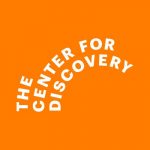
Center for Discovery, New York:
The Center’s approach to the design of residential programs is based on the idea that while individual impairments cannot be ignored, they need not be limitations. A great deal of thought, planning and effort goes into creating opportunities for each resident to develop their potential, to make choices, and to discover and develop abilities in every aspect of their life.
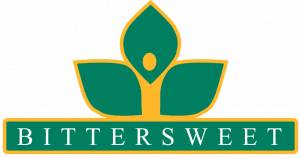
Bittersweet Farms, Ohio:
A pioneering farm community for adults with autism, Ohio.

Madison House Autism Foundation, Maryland:
Leaders on the adult autism housing crisis, advancing the mission to achieve true housing choice for adults with autism.

3 Bluebirds Farm (formerly 3 Irish Jewels Farm), North Carolina:
“Empowering families impacted by autism to spread their wings.” Currently operating programs for school-aged children in North Carolina, with a plan to establish a residential community for adults who have aged out of their programs.
Safe Haven Farms, Ohio:
Residential and day programs for adults with autism.
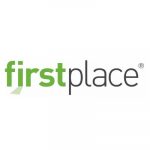
First Place, Phoenix:
First Place is developing a mixed-use property and new home option that is supported and community connected. The property includes apartments for residents, a residential academy for students and a training institute for professionals and support service providers.
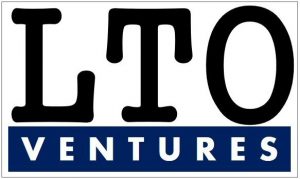
LTO Ventures, Nevada:
LTO Ventures supports and endeavors to learn from innovative live / work / play community models for adults with Autism or similar development disabilities around the U.S. that are currently operational or in planning/development stages. Also aiming to create a privately funded community model of autism housing in Nevada.
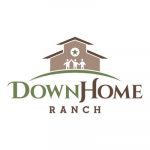
Down Home Ranch, Texas:
Serving primarily adults with Downs Syndrome.
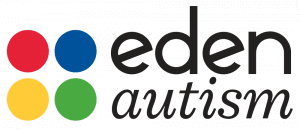
Eden Autism Services, New Jersey: Group homes and many other programs in central New Jersey.
Please note this is a partial list of housing options and does not purport to include all organizations serving people with autism. Inclusion of any organization does not imply endorsement, and omission does not imply disapproval. Organizations are listed at the discretion of Autism Society San Francisco Bay Area. The information is gathered primarily from public sources and is not guaranteed to be accurate. To suggest additions, please email [email protected].
So you want to create some ASD adult housing?
General Concerns
- Adult autism is a largely new phenomenon, with little historical precedent
- As a consequence, there are few options for the surging population of adults with autism
- The creativity, smarts, and chutzpah of concerned parents will spur innovative solutions
- Fed and state social programs need revamping to address unprecedented, intensive needs
- Many options are financially out of reach for ASD families; we cannot stress enough the need for new programs and incentives to boost supply of housing affordable and available to those with ASD
- On top of the financial barriers, it can be challenging to secure Regional Center commitment to fund services; each family is at a different state of readiness financially and emotionally; it is difficult for groups of parents to reach consensus about project details; and projects often require strong, committed leadership
- Okay, that said, here are some things to think about….
- 80-90% of young adults with autism continue to live at home with parents
- Sustainability of this arrangement is often dependent on existence of good-quality day programs or supported employment, both of which are in short supply
- It is also dependent on support staff to assist the parents at home as needed. County-funded In-Home Support Services and Regional Center-funded Independent Living Services can provide additional support at home, though pay rates are below market.
- Assuming parents are mortal, this is a temporary solution. However, the family home can be put in trust as a “legacy home” with a life estate for the adult child, managed by a nonprofit, with other rooms rented to roommates, as may or may not be appropriate. The child’s care could be managed by a Supported Living Services agency, funded by the Regional Center.
- A group of parents can purchase or build a single-family home for maybe three or four developmentally disabled adults, with ASD-friendly design and amenities
- This investment could be liquid, with ability to sell shares should the child need to move
- Or the parents can create and fund a nonprofit, which would then acquire the home. In this model, if the child had to move, the parents’ investment would be lost. On the other hand, the nonprofit ownership may sway toward greater permanence of the asset serving those with ASD, and also property tax could be waived.
- The owner could then contract with a vendorized group home operator to provide services
- In theory, most operating costs would be covered by Regional Center vendor funding
- Just like the above, but without licensing or a master program operator
- It could be owned by an LLC or a nonprofit
- The tenants would have their own SLS or ILS support, per Regional Center IPP
- Property management could be via parents, owner, or a nonprofit
- In an ASD-inclusive apartment community (like FCSN), parents and other investors could band together as an LLC to purchase or build an apartment complex to serve their children and possibly others as well
- There are basically four ways for an ASD adult to pay rent:
- A “low-income” unit with a fixed low rent
- A market-rate unit heavily subsidized with a portable rental voucher (Section 8). Please see this sample letter for advocating for HUD rental vouchers from your local Housing Authority
- A market-rate unit heavily subsidized with a property-based rental voucher (another form of Section 8)
- A special needs trust or other private payor
- The LLC management team could deliberately include ASD-friendly design elements and onsite amenities
- The LLC could possibly contract with Regional Center to provide programmatic and/or property management elements
- Parents would own shares in the LLC, which shares could be sold to new investors/tenants upon approval of other members
- If formed as a nonprofit, little property tax owed, but then it would no longer be a liquid investment for the parents
- Structure of investment could be tailored to needs of the investors
- Ideally, tenants would receive rental vouchers (Section 8) to cover costs of maintenance and operation, with possibly some return to investors
- As an alternative, the investors could angle to get the property “project based” vouchers from the local Housing Authority to subsidize the rents
- In this model, parents could band together as a nonprofit to find and support ASD housing in the city. Similar programs are run by West Bay Housing Corporation in SF and Housing Choices Coalition in San Jose.
- Existing properties can be maximized through a nonprofit such as WBHC through a centralized application and wait list management
(Due to fair housing laws, this means tenants are selected via lottery or waitlist)
- “Low-income housing” includes housing offered at reduced rents in development projects that have received public funding of some sort.
- Ironically, most ASD adults are too impoverished to qualify for low-income housing, which usually have income thresholds, with some exceptions.
- Parents are often reluctant to spend time and energy supporting these projects because tenants are selected through a lottery process. In other words, parents risk no personal return on their investment of time and/or money.
- That said, Housing and Community Development and Tax Credit Allocation Committee funding could be moved to fund multifamily projects that address intensive needs of those with substantial neurodevelopmental impairment, including new housing models, which could possibly involve an integrated services solution.
- In SF, Mayor’s Office of Housing (which now runs Public Housing and Redevelopment), could also be tapped to provide ASD-friendly housing in publicly owned properties.
- Nonprofit entities such as WBHC could develop new ASD-friendly properties or units in other developments via set-aside arrangements.
- Expansion of the concept of Community Placement Plan housing. The CPP program is funded by DDS to move consumers from Developmental Centers, such as Agnews, to licensed residential care facilities with on-site services at negotiated rates (eg, group homes). Applying the CPP model to the creation of new housing stock for ASD adults could be a compelling concept, though unlikely to provide large numbers of units, and again, parent effort and investment would be discouraged due to lack of assurance one’s child would be awarded an open spot.
The Autism Society of the San Francisco Bay Area provides information but it does not constitute medical or legal information. Referrals provided are suggestions to organizations that might help, but do not constitute a recommendation. The Autism Society cannot be held responsible for consequences that arise from individual dealings with a professional or organization. The Autism Society provides an I&R service but individuals must assume personal responsibility for what they do with the information provided. Inclusion of any organization does not imply endorsement, and omission does not imply disapproval.
Advocating in Your Community
The Bay Area is facing a dire shortage of housing options for adults with ASD. One way to help increase the supply is to ensure local municipal General Plans provide for low-income housing directed at adults with developmental disabilities. General Plans should also explicitly allow for Adult Residential Facilities (group homes) and secondary units for dependent grown children.
Please consider advocating in front of your city’s Housing Commission, Planning Commission, and City Council.
To: City Council, Mayor, Planning Commission, Housing Commission
From: ______________________
Date: ______________________
Re: The Need for Housing for Adults with Autism and Developmental Disabilities within our Jurisdiction
BACKGROUND
With California’s de-institutionalization of people with developmental disabilities beginning in the 1980s, all communities took on the explicit responsibility to create housing opportunities for their developmentally disabled populations.
Today, we face an unprecedented challenge. California Department of Developmental Services statistics show that for every 1 person with substantially disabling autism in the early 1980s, there are now more than 20. This staggering increase in significant lifelong disability has prompted the ever-increasing demand for specialized community-based housing for dependent adults with autism.
With extremely low incomes and little to no ability to pay rent as a result of their disability, adults with autism transitioning out of the family home have few options for finding or sustaining community-based housing.
SOLUTIONS
We therefore ask the city to actively support a variety of housing opportunities for persons with autism, including adult residential facilities, low-income housing units designated specifically for adults with developmental disabilities and extremely low incomes, and accessory structures and accommodations that will allow families to keep their grown autistic or developmentally disabled children at home.
Here’s how we can do it:
• Develop local funding resources and continue to utilize other local, state and federal assistance to the fullest extent possible, with an emphasis on housing voucher programs available through the local Housing Authority.
• The City’s Below Market Rate housing program can also explicitly address that skyrocketing autism rates require a dedicated effort to finding local ways to address the unprecedented developmental disability housing need.
• Use HUD 811 funds for new construction, rehabilitated units and vouchers.
• Use tax credit incentives for private investment in affordable housing.
• Require set-asides of housing units specifically for the developmentally disabled who have extremely low incomes in new and rehabilitated developments.
• Identify surplus land and prioritize housing for the autistic/developmentally disabled.
• Amend zoning regulations to ensure group homes and supported housing is defined and considered a residential use subject only to the same standards and requirements applicable to other residential uses in all zoning districts.
• Ease parking requirements in developments that set aside units for adults with developmental disabilities.
• Partner with the Housing Authority, regional center to develop a NOFA (notice of funds available) and RFP (request for proposals) to apply for funds to develop autism housing.
CONCLUSION
California has closed its institutions while making an unwavering, unsparing commitment to community-based care for adults with developmental disabilities, including autism. We must make this a reality, not lip service. Such steps are also necessary to comply with SB 812 (2010), that requires all Housing Elements to address the housing needs of people with developmental disabilities.
Please include this letter in the record of public comment. We appreciate your consideration.
Very truly yours,
Resource Library
This page shows only housing resources.
To view our full resource library, click below.

